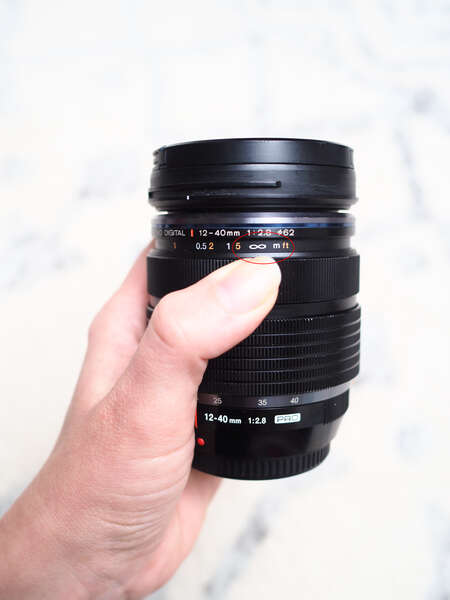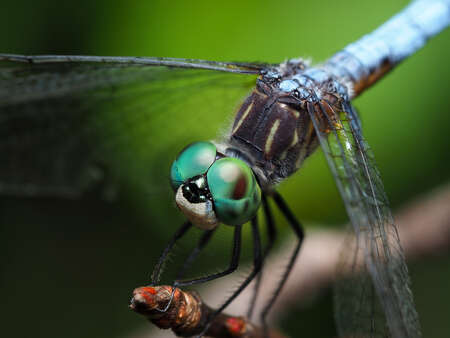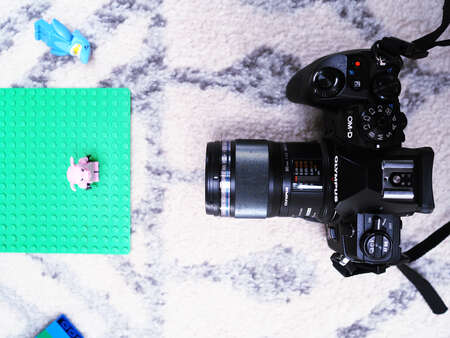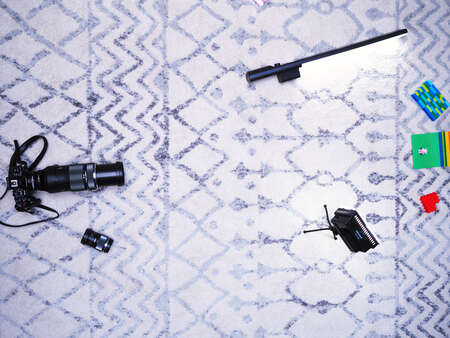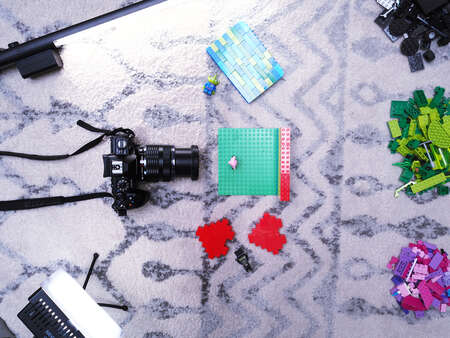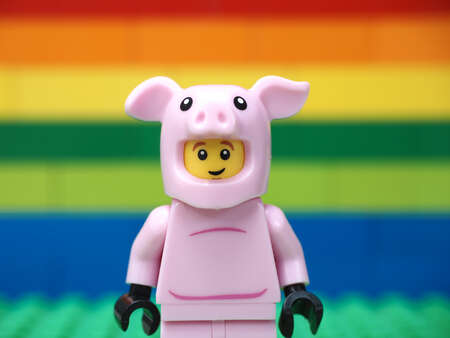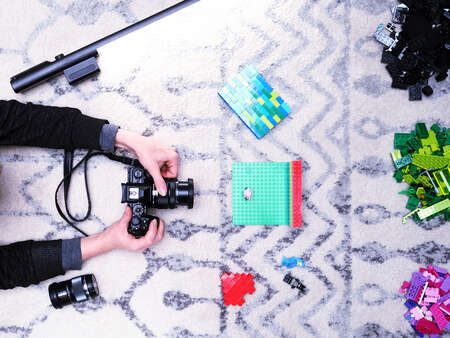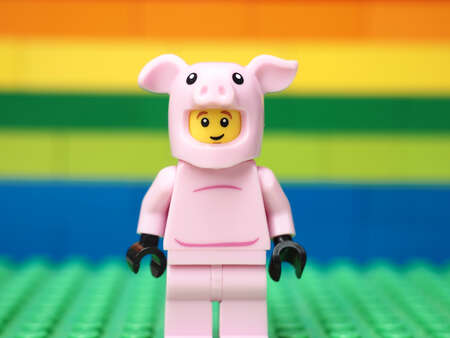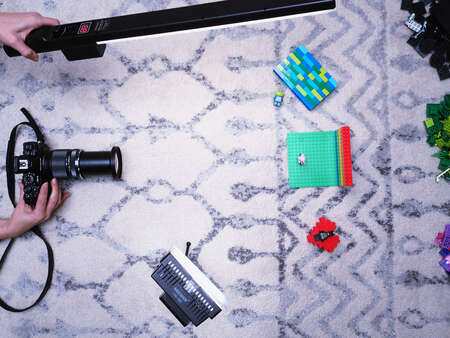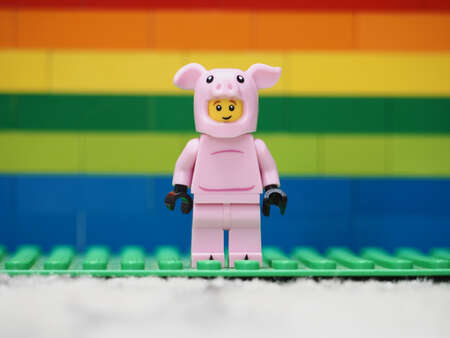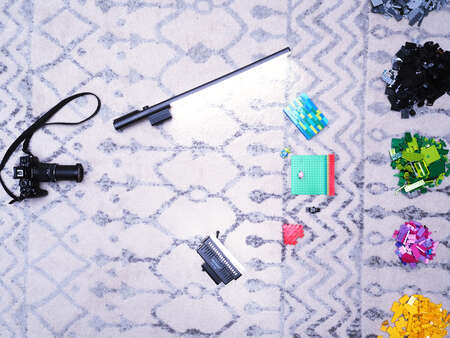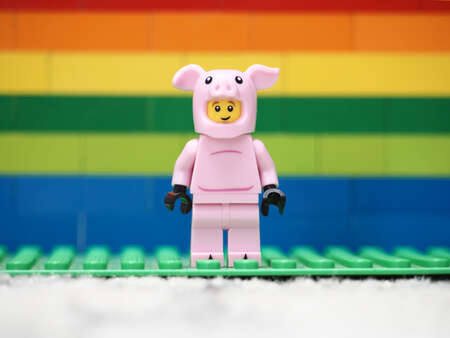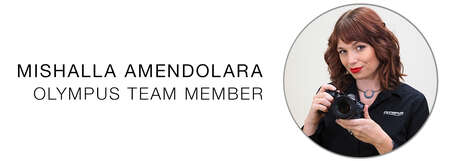Diving into the world of macro photography can be intimidating, especially if you do not have a macro specific lens – but don't be afraid! There are several lenses in the M.Zuiko lineup that will give you magnification that will work for close focus photography, at different focusing distances.
Every lens will have a minimum focusing distance, which is the closest distance that you can get to your subject when taking a photo. This measures the distance from your camera's sensor to your subject, and not the distance from the end of your lens to your subject. Usually, your lens' minimum focusing distance is written on your lens and can be found on your lens underneath the lens name on the focus clutch. If your lens does not have a focus clutch, you will find the minimum focusing distance written on the back of the lens near the mount.
Often in close focus photography, or macro photography, we work with a different measurement referred to as “minimum working distance.” This measurement is the working space you have off of the front lens element to your subject.
Working distance does not always matter, but when you are working with a subject that is a living creature, it can make all the difference in the world!
For example, take dragonflies. They are quick to take flight and are easily frightened by your presence. The closer you get to this subject, the more likely they are to fly away. The more working distance you have (i.e. the further away you are from this flighty, little dragonfly) the better your chances are for capturing him as he interacts normally with his environment.
As an illustration of this let’s look at the M.Zuiko 60mm F2.8 Macro lens. When you are using this lens in its 1:1 reproduction range – when the size of the subject on the image sensor is life size or greater. – your minimum working distance is roughly 4 inches away. This presents no problems if you are photographing inanimate toy people – like my #HomeWithOlympus test subject – but can become more challenging if you are trying to capture a bee buzzing around a flower.
For the setup below, my camera was 4 inches from my subject. At a 1:1 reproduction range, this is the type of macro output you can expect.
Telephoto zoom lenses can be a great alternative when you are starting out on your close-up photography journey, and are more likely to already be part of your lens setup. While you would need a lens with a reproduction ratio of at least 1:1 to achieve what is considered "true macro," you can achieve very similar results with a close-focusing zoom lens.
When dealing with nature and wildlife, you will want to take care to protect their space and not disturb their routine. We can do this by using a telephoto zoom lens to get the magnification we want, but allowing for physical space between the camera and the subject. A common combo that can be ideal for this is the M.Zuiko 100-400mm F5.0-6.3 IS, paired with the MC-20 2X Teleconverter. These two pieces together can allow for macro magnification, while keeping you about 4.26 inches away from your subject.
But what if I don't have a PRO lens? Can I still use one of my current zoom lenses for close-up photography. Yes!
Here are some of our M.Zuiko lenses that I recommend for close-up photography:
|
|
Official Minimum Focusing Distance |
Approx. Minimum Working Distance at Full Zoom |
|
M.Zuiko 12-40mm F2.8 PRO |
7.92 inches | 2.5 inches |
|
|
4.68 inches | 4.5 inches |
|
|
6 inches | 10.5 inches |
|
|
8.66 inches | 17 inches |
|
|
1.64 / 19 inches | 12 inches |
|
M.Zuiko 30mm F3.5 Macro |
3.7 inches | .55 inches |
|
|
7.5 inches | 3.5 inches |
|
|
2.96 / 35.5 inches | 28 inches |
|
|
2.3 / 35.5 inches | 19.5 inches |
|
|
2.96 / 35.5 inches | 50 inches |
Here is a look at some real world working distances, and the resulting images. For each of these setups, I was at the closest possible working distance to my subject, at full zoom.
Mishalla is a technical expert for Olympus cameras. She has spent years in the photography and events industry, and has now found her place working on educating customers so they can love their OM-D and their photography more. Find her working on #HomeWithOlympus projects, or snapping photos of bugs and birds in the back yard!
